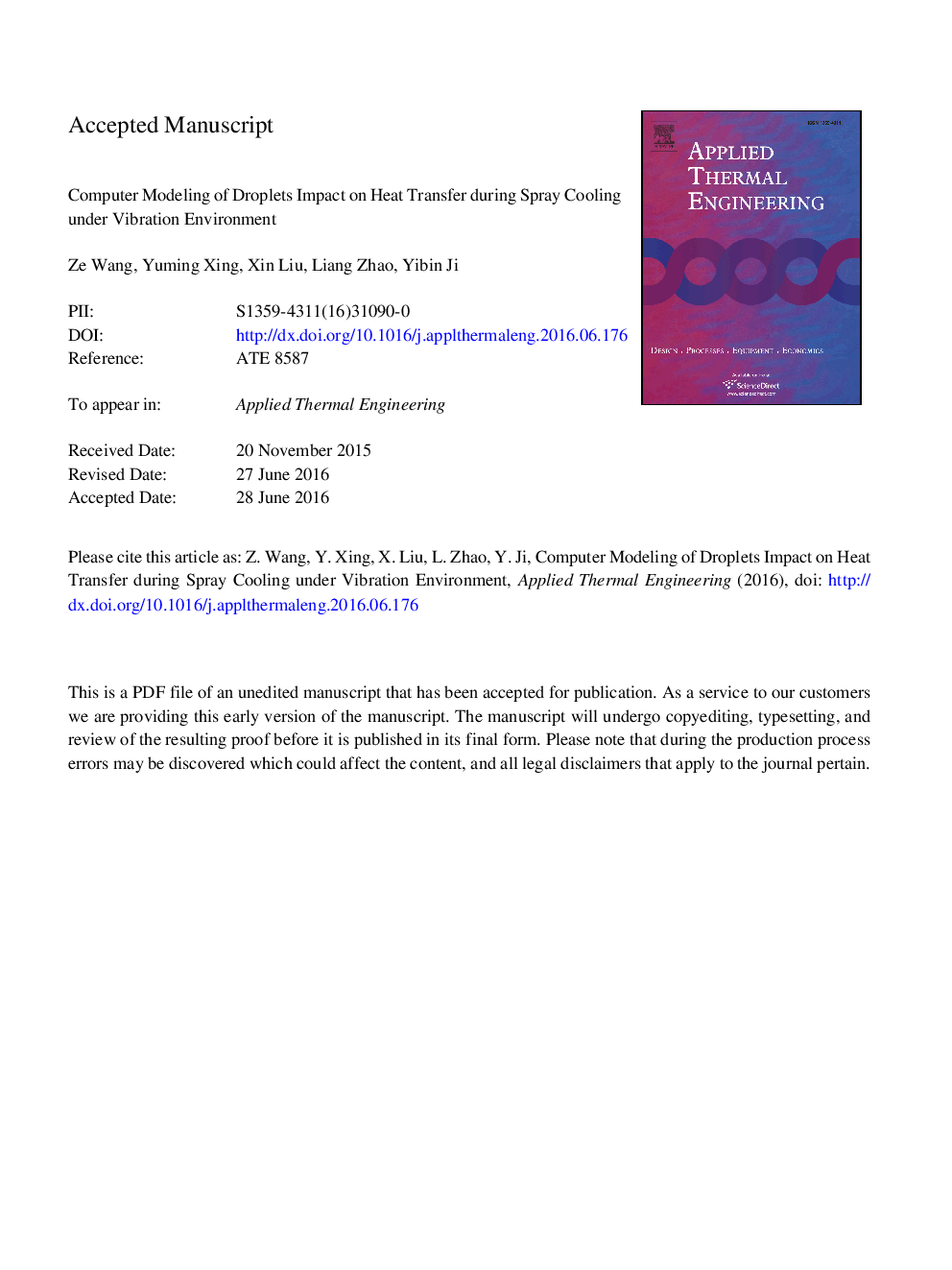| Article ID | Journal | Published Year | Pages | File Type |
|---|---|---|---|---|
| 7047163 | Applied Thermal Engineering | 2016 | 19 Pages |
Abstract
The heat transfer process among droplet, film and bubble is selected as the local characteristic process of spray cooling to build a multiphase flow model. Volume of fluid (VOF) method is employed to simulate the transient process, in which single or multiple droplets impact on a liquid film with a vapor bubble growing, considering the effects of surface tension, gravity and vapor-liquid phase transition. The effect of vibration environment is analyzed by setting vibration boundary condition, and a far broader range of vibration condition is calculated in light spray and dense spray to identify the effect. Heat is mainly removed by strong convection due to the droplet impact. It is significant to form stabilized and intact film during spray cooling. Heat transfer process can be mainly separated into four stages: 1. before the impact; 2. droplet impacts on the surface and forms thinner film on the surface; 3. film extends outwards; 4. film breakage. In dense spray cases, the third stage is barely observed due to continuous impacting of droplets, and mainly all the cases show that vibration has invigorating effect on heat transfer.
Related Topics
Physical Sciences and Engineering
Chemical Engineering
Fluid Flow and Transfer Processes
Authors
Ze Wang, Yuming Xing, Xin Liu, Liang Zhao, Yibin Ji,
